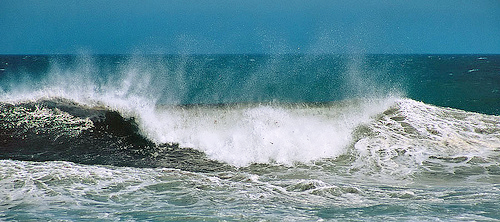Written by Wayde Beckman from the Health Sponsorship Council.
February 2011
“I got windburnt today.” “My lips feel windburnt.” It’s something we hear from time to time (and even say ourselves) to explain red, sore, dry skin or lips after being outside. And in this glorious country of ours, it’s hard to be outside and not feel the sweet caress (or fierce pummeling) of the wind. But what is windburn? And can the wind really burn our skin?
Well, according to Wikipedia, windburn is a common term for sunburn accelerated by the effects of wind removing the UV-filtering thin layer of lipids from the skin. Scientists have, in fact, discovered that the condition is the result of sun exposure – not the wind. So it seems that our life-giving star called the sun is the real culprit.
Windburn is a misnomer
But as wonderful as the internet is, it’s prudent to check another information source, especially given that Wikipedia is a self-described “free encyclopedia that anyone can edit”. Double-checking with a dermatologist (skin doctor) confirms that the term windburn is a misnomer. And that red, sore, dry skin or lips is actually sunburn caused by ultraviolet (UV) radiation.
So if windburn doesn’t actually exist, why does our skin (and lips) get especially red, sore and dry when we’ve been outside on a windy day? There are a number of reasons, such as the wind keeping the air temperature cooler and refreshing so we tend to stay outside for longer. And this means more exposure to UV radiation. Our 15,000 kilometres of coastline probably also contribute. Sea breezes along the coast are common and with all that coast to be enjoyed, it means we are out there making the most of the beaches and sea. The sea breezes help reduce the heat in the air so we have less need to retreat under cover or into the shade to cool off. The same thing can happen inland near hills and mountains where the cool breezes keep the air temperature lower but leaves us vulnerable to UV radiation. All this extra exposure to UV radiation causes our skin to burn – unless we protect it.

UVA and UVB....
Sunburn that happens after being out in the wind can sometimes feel especially painful. Who knows, maybe that’s why windburn was thought to be something different? The explanation for this extra discomfort is a bit complex. There are two types of UV radiation: UVA and UVB. In the cooler months of autumn, winter and spring there is proportionally more UVA in our environment than UVB. And because these months are cooler, we tend to be able to stay outside for longer on those days when the weather is nice. The effect of this is that we get exposed to more UVA and, if for long enough, to get sun burnt. UVA radiation is known to penetrate more deeply into the skin than UVB. As a result the UVA reaches the nerve endings where it inflames and damages them (causing pain). Because the nerve endings are deep under the skin, it can take anything from 12 to 24 (or even 36 hours) for the pain and discomfort to be felt – and these symptoms can last for two or three days. In comparison sunburn caused by the higher levels of UVB in summer usually takes just two to six hours for the pain and discomfort to kick in.
So the upshot is that windburn doesn’t exist and the wind doesn’t burn our skin. The good news is that we can look after our skin by being SunSmart every day – even on cloudy or cool days because UV levels can be just as high as on sunny days. And don’t let a cooling breeze trick you into thinking you aren’t getting sunburnt!